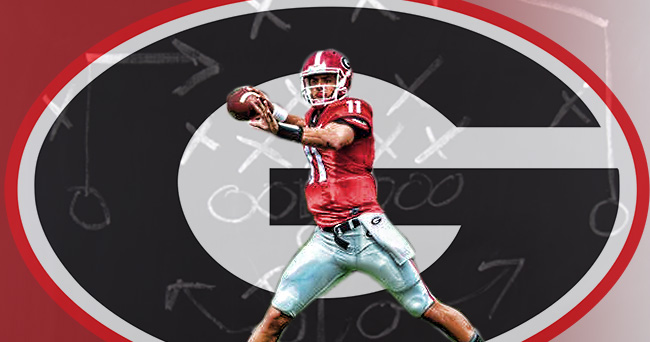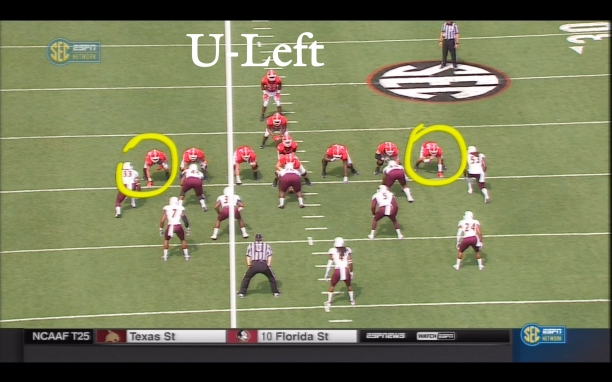
Film Study: Schottenheimer's user-friendly scheme tailormade for Georgia's personnel
After the silly season in college football which saw an inordinate amount of coaching and personnel changes take place, we had to sift through one of the most exciting time periods, at least in my humble opinion, National Signing Day. And after spring practice, where anyone with any type of device that hooks to the Internet became some type of prognosticator, we were treated to the musings of fall camp — after what seemed like an eternity of nothing, of course.
As it pertains to the University of Georgia, the navigation of a change at the offensive coordinator position — after long-time whipping boy Mike Bobo was named head coach of Colorado State University — seemed as flawless as the recruiting haul it reeled in before debuting some of the concepts new OC Brian Schottenheimer deployed during the annual spring game.
However, even a “Cadillac” program like UGA isn’t exempt from certain aspects we saw around the college football landscape — mainly indecision as to who would start at quarterback for a team as primed as any to find a seat at the table of the College Football Playoffs.
After all, when you’re in possession of, perhaps, the most talented front seven in the country, a much-improved secondary (filled with players who gained invaluable on-the-job training last season), the best offensive line and running back in college football in addition to a host of talented receiving targets, all you need is as little change as possible.
So imagine the angst among the Red & Black faithful when little-known transfer Greyson Lambert, from the University of Virginia of all places, was named starter after pretty much everyone in the media poo-pooed on him even receiving a shot to be the backup over veterans Faton Bauta and Brice Ramsey.
Obviously, I threw shade in that last paragraph just so I could point out how I was the first media member to champion Lambert for the starting gig. (Hey, at least my cockiness has led to more honesty, right?!). But I only came to that conclusion because of my awareness of the entire football landscape, understanding of player personnel development and overall handsomeness. (I kid…sort of.)
All kidding aside, the main reason I went all Ms. Cleo on the QB situation was because I understood just how friendly Schottenhemier’s scheme is for a QB who has the ability to decipher the quick game. And while it may be hard to truly project what’s what against an inferior squad the likes of Louisiana Monroe, we can glean just how the scheme could cut down on the learning curve for any signal-caller.
We already knew the use of multi-tight sets, “Rhino,” “Jumbo,” “Ace” and “U personnel,” would be prevalent in the Schottenheimer’s scheme, as he not only wants to shrink the field for his QBs with larger targets, but he also wants to coerce the defense into countering with its base personnel.
“U” personnel is by far my favorite personnel grouping for this particular UGA offense as it puts all the players on the field that best complement the great Nick Chubb’s skill set: hybrid Quayvon Hicks and tight ends Jeb Blazevich and Jackson Harris.
Not to mention you have the explosive Malcolm Mitchell, not pictured, on an island for a variety of spotlight routes; let’s take a look at how UGA derived versatility out of this grouping.
Here’s a simple iso-lead out of said “U personnel.” Notice how both tight ends, Blazevich and Harris, are physical at the point of attack; pay attention to how many defenders are in the box, too. You almost have no choice but to pack the box as you not only want to maintain leverage for your run fits, but you don’t want to provide space for potential quick strikes to the “Y” and “U.”
Here’s a bit of a Levels concept out of “22 personnel,” which constricts you to the middle of the field and allows you to press the third level in addition to out on the edges. Not many linebackers have the wherewithal to defend a talent like Blazevich, and not many defensive backs have the size to compete with him out in space, if any.
What I mostly like about this grouping is how it isolates Mitchell out on the edges. I saw him positioned at a “Nasty” split and near the numbers. Here we see a built-in “Smoke” call out of a planned run play; who can handle Mitchell in the open field in a one-on-one situation? (That was a rhetorical question; give me a lap!)
Another grouping that will be beneficial for the ‘Dawgs offense is “Ace personnel,” yet another multi-tight set that would demolish a light box like in the above still. Although this takes Hicks off the field, it allows for more speed in the form of Terry Godwin, Isaiah McKenzie and Reggie Davis.
Schottenheimer’s scheme is beneficial to the run game as it puts extra blockers in that provide cause for pause, as they are viable threats in the pass game, too. Additionally, it shrinks the field by providing larger targets for the QB in the short-to-intermediate portion of the playbook.
Having a coordinator who’s adept at many different schemes affords Lambert and Ramsey the benefit of a user-friendly offense centered on a punishing rushing attack.
Expect the tight ends to play a pivotal role as long as Schottenheimer is in Athens; so far so good for the good guys, but we’ll examine it more as the competition ramps up.





